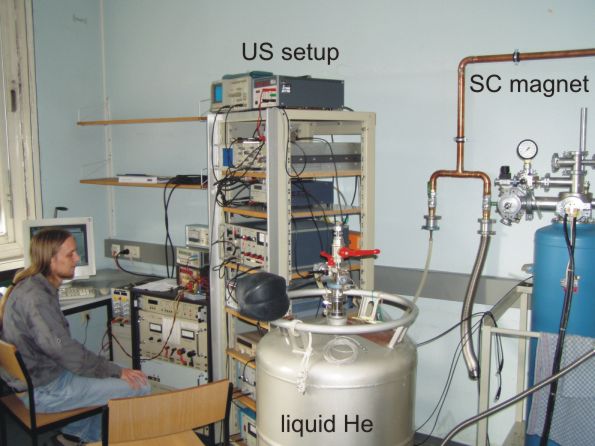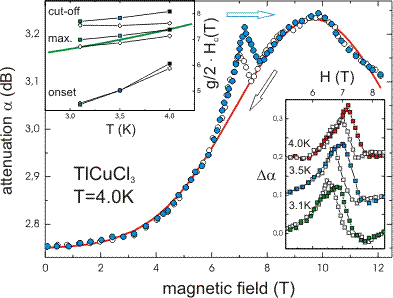Setup:
Heterodyne Setup:
|
Highly constant
frequency source, (Rohde&Schwarz, SMY01) | |
|
RF Amplfier,
1-500MHz, switch (ISI) and heterodyne mixer (HP) |
|
Preamplifier/filter
(Stanford Research) | |
|
Puls- and
Delaygenerator (Stanford Research) | |
|
Boxcar Averager
(EG&G, analog and digital) | |
|
Superconducting magnet and bath cryostat |
Pulse-Echo Setup:
|
Pulsed RF sources,
0.9-20MHz, 10-90MHz, 90-300MHz (Matec) | |
|
Synchronization,
Log-Peakmeter (Matec) |
|
Frequency Counter |


